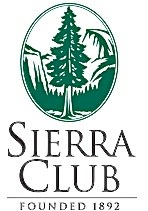Spokane River Project

Spokane River Project

Spokane River PCB Litigation Update
Sierra Club moves forward on our two lawsuits challenging the U.S. Environmental Protection Agency and Washington Department of Ecology for failure to prepare a PCB cleanup plan for the Spokane River, and for issuance of a pollution permit to Spokane County’s new sewage treatment plant, allowing even more PCBs to be added to the River. Trials are scheduled for March 25-28 and July 1-10, 2013.
Sierra Club’s litigation is important for two reasons.
First, the Spokane River needs our help as one of the most polluted rivers in the state, contaminated with heavy metals, nutrients, and toxics. Ecology has issued water quality cleanup plans for the metals and nutrients, but not for the PCBs, furans/dioxins and PBDEs that pollute river sediments and fish. These toxic chemicals are a serious public health problem, and the Department of Health warns people to limit or avoid consumption of fish from the river.
Second, the Spokane PCB situation illustrates deep flaws in how Ecology’s proposed new “fish consumption” water quality standards will be implemented.
Standards based on fish consumption rate, or FCRs, are a good thing. In Washington, we are fish-eaters. This is particularly true of the Native American tribes who have lived in the region since time immemorial, and of the many immigrant communities, including Asians, Pacific Islanders and eastern Europeans, who now live here. Recent studies estimate that these populations consume fish at or above the 90th percentile for Americans, i.e., 250 grams (9 ounces) per day for adults. Despite these data, Washington’s current standards for toxic chemicals assume that everyone eats an average of only 6.5 grams of fish per day.
Unfortunately, fish consumption comes at a cost. Fish that reside in or migrate through heavily polluted waters will consume and “bio-accumulate” toxic chemicals. People who eat fish from contaminated waters also bio-accumulate toxics, which risks human health, especially for children and pregnant women. The more we eat, the higher the risk.
Washington is moving toward adopting FCR standards based on consumption of at least 175 grams per day. These standards will create a foundation to regulate water quality, including meaningful end-goal targets for cleanup plans and limits on pollution from sewage and industrial treatment plants.
And, as it turns out, we are ahead of the curve in Spokane. Federal law authorizes Native American tribes to set water quality standards for their reservations. In 2003, the Spokane Tribe of Indians adopted FCR standards for PCBs that are fifty times more stringent than Washington’s present standards. These standards are enforceable on upstream polluters, including the eight treatment plants on the Spokane River in Washington and Idaho.
Because the Spokane River is heavily polluted, and because the Spokane Tribe has adopted enforceable FCR standards for toxics, the actions taken here set an example for the rest of the state. Spokane is in a position to answer the question: once water quality standards that protect fish consumers are adopted, how will those standards be implemented? This is where Sierra Club’s lawsuits come in.
As noted, water quality standards should set targets for clean-up plans and pollution permits. But last year, the Washington Department of Ecology abandoned its cleanup plan for Spokane River PCBs because, it said, the Spokane Tribe’s FCR toxics standards are too difficult to meet.
Ecology then issued five permits: renewals for the City of Spokane and Liberty Lake sewage plants, and the Kaiser and Inland Empire Paper industrial plants – and a new permit for the County’s brand-new treatment plant. These permits contain no limits on the amount of PCBs that may be discharged to the already-polluted river. Because these actions violate Clean Water Act requirements, Sierra Club sued.
Rather than follow Clean Water Act requirements, Ecology has created a “Toxics Task Force” that allows Spokane River polluters to decide for themselves how much they want to cleanup and how much they want to pay for it. EPA says this requirement is unenforceable and will not include it in upcoming permit renewals for the three Idaho sewage treatment plants. Even Kaiser Aluminum appealed its own permit, stating (correctly) that the Task Force condition is “vague and unenforceable.” The reality is, the Task Force is the latest in a long line of actions that allow Spokane River polluters to blame everyone but themselves.
Ecology is promoting the Spokane Toxics Task Force as a pilot project to be used throughout Washington as a substitute for Clean Water Act requirements. As soon as Ecology adopts FCR standards, it plans to move to an illegal and ineffective process to implement those standards.
After eight years attempting to convince the agencies to do the right thing, litigation was the remaining option. In October 2011, Sierra Club filed a federal lawsuit against EPA for failure to step in and prepare a PCB plan, given Ecology’s refusal.
On December 1, 2011, Ecology issued a permit to the new Spokane County sewage plant, which will add PCBs to the Spokane River in violation of federal law. Sierra Club appealed the County permit, and is seeking a zero discharge condition.
Sierra Club and its co-plaintiff, the Center for Environmental Law & Policy (CELP), are represented by the Seattle law firm Smith & Lowney. Trials in the two lawsuits are scheduled for late March and early July 2013.
PCBs and other toxic contaminants in the Spokane River are serious business. If you would like to help with our efforts, please contact John Osborn - john@waterplanet.ws
